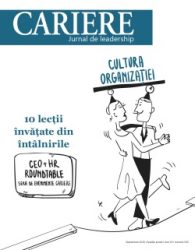Fear of Failure

One of the reasons Virgin’s enterprises have been successful over the years is that we empower the staff to make mistakes – and then learn from them. Since our management structure is very decentralized, our teams are challenged to run the businesses as if they were the owners. I have found that this creates a high level of loyalty, devotion and innovation. When things do go wrong, the team members feel such ownership of the enterprise that they usually roll up their sleeves and turn it around.
This ability to bounce back after a setback is the single most important trait an entrepreneurial venture can possess. If innovation is at the heart of your business, obstacles come with the territory. How you react to and navigate those hurdles will make the difference between failure and success.
I’ve been lucky enough to helm many successful companies, but I’m the first to admit that I’ve also directed a few that failed. You may have heard of Virgin Cola, a company we formed in the 1990s to take on the industry’s two big powerhouses: Coca-Cola and Pepsi. We attempted to shake up the market in true Virgin fashion, but it didn’t quite work. From the outset, we faced distribution issues – we couldn’t get Virgin Cola on the shelves in the numbers needed to make an impact and achieve economies of scale.
We certainly didn’t lack enthusiasm, but we quickly learned that the two giants had a firm grip on the market. It was tough to find their weaknesses. Taking on two of the biggest brands in the world, both of which proved to be anything but complacent, was a tremendous lesson for all of us. But still, one of my fondest memories is of our publicizing Virgin Cola’s attack on Coke by driving into Times Square in a huge army tank and taking aim at the Coca-Cola billboard!
A more recent example involves Virgin Money (our financial-services arm) in Australia, where we introduced our first Virgin branded credit card in 2003. The Australian banking industry is monopolized by four major concerns: ANZ Bank, Commonwealth Bank of Australia, National Australia Bank and Westpac Banking Corporation. Altogether, they handle 80 percent of all banking transactions in Australia. Though we entered the market for the right reasons and had a terrific product, we took the wrong approach with the partner bank that issued the card, which eventually led to the business’s demise.
It was a tough loss for many of our customers. As a matter of fact, when I’m in Australia, I still meet people who carry their old Virgin cards in their wallets! We vowed to launch an even better card as soon as the right opportunity presented itself.
Which brings me to the next stage: bouncing back. Nearly three years after the failure of the original Virgin credit card, I have returned to Sydney both to relaunch a range of card products and to start the Virgin Saver online savings account. The difference this time: We have the right people and the right partner (Citibank) for achieving long-term success.
I suppose the secret to bouncing back is to be unafraid of failure. Setbacks are discouraging, but you should always try to channel that feeling into positive action. The key to Virgin’s continuing success has been this simple idea: When we get something wrong, we try to understand why and quickly make a change. Then we focus on what works and take it to the next country or industry or sector.
If you can identify and learn from your mistakes, you have a much greater chance of bouncing back from them – and succeeding the next time.

